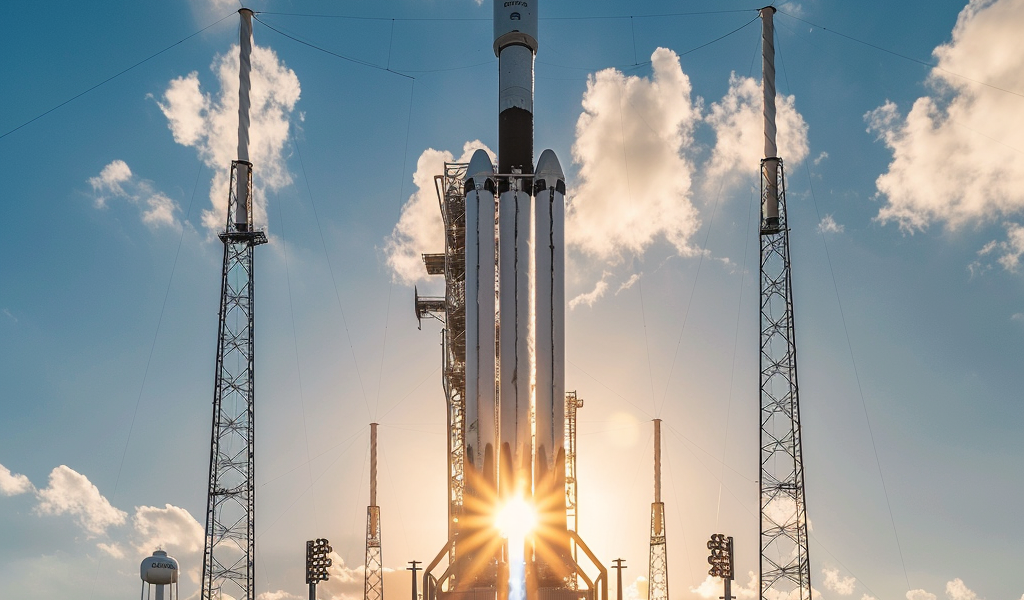On July 27, 2024, United Launch Alliance (ULA) made significant strides in its preparations for the upcoming launch of its Atlas 5 rocket, which is set to be a historic event for the aerospace industry. This launch will mark the final national security mission for the Atlas 5 rocket, designated as the United States Space Force-51 (USSF-51). Scheduled for liftoff on July 30, 2024, the mission represents not only the culmination of the Atlas 5’s contributions to national security but also a milestone as the 100th national security mission launch for ULA.
The Atlas 5 551 rocket was transported to the launchpad at Space Launch Complex 41 (SLC-41) located at Cape Canaveral Space Force Station. The movement occurred shortly after noon on July 27, with the rocket arriving at the pad by 12:30 p.m. EDT. This event follows a successful launch readiness review conducted just a day prior, showcasing ULA’s meticulous preparation for this pivotal mission.
Col. Jim Horne, Senior Materiel Leader of the Launch Execution Delta, expressed a mix of pride and nostalgia regarding the mission. Reflecting on his experience, he noted, “This is a bittersweet moment for us. I’ve had the privilege of sitting console for the very first national security Atlas launch in 2007, STP-1 (Space Test Program 1) in March of that year, and here we are with our last national security Atlas.” He extended his gratitude to the entire team involved in the program, highlighting the strong partnership between the government and ULA over nearly two decades.
While specific details about the USSF-51 mission remain classified due to its sensitive nature, Col. Horne emphasized the importance of the mission in the current geopolitical climate, stating, “This is a very important mission for national security in this time of great power competition, but that’s really all we can say at this time.”
The Atlas 5 rocket designated for the USSF-51 mission is configured as a 551, which includes five solid rocket boosters and a 17-foot (5-meter) diameter short payload fairing. The entire vehicle stands approximately 196 feet (59.7 meters) tall, showcasing the impressive engineering and design that has been a hallmark of ULA’s launch vehicles.
Looking ahead, Gary Wentz, ULA’s vice president of Government and Commercial Programs, shared insights into the future of the Atlas 5 program. Following the USSF-51 mission, there are still 15 Atlas 5 rockets remaining, with nine of those set to support Amazon’s Project Kuiper constellation. This highlights the ongoing versatility and adaptability of the Atlas 5 rocket, even as it concludes its national security missions.
As the countdown to the USSF-51 launch continues, excitement builds within the aerospace community. This final mission for the Atlas 5 rocket not only represents the end of an era but also sets the stage for future advancements in space exploration and national security. The Atlas 5 has been a reliable workhorse for ULA, and its legacy will undoubtedly influence the next generation of launch vehicles.
In addition to this historic launch, SpaceX is also making headlines with its own developments. The company recently completed its 300th booster reflight during a back-to-back series of Falcon 9 launches. This achievement underscores SpaceX’s commitment to reusability and efficiency in space travel, further solidifying its position as a leader in the aerospace industry.
Moreover, SpaceX is preparing to launch 21 Starlink satellites from Vandenberg Space Force Base, with live coverage of the event scheduled to engage space enthusiasts worldwide. As both ULA and SpaceX continue to push the boundaries of spaceflight, the future of aerospace looks brighter than ever.
As we approach the final launch of the Atlas 5 rocket, the aerospace community reflects on its rich history and looks forward to the innovations that lie ahead. With the completion of the USSF-51 mission, ULA will not only honor the legacy of the Atlas 5 but also pave the way for new technologies and missions that will shape the future of space exploration.





